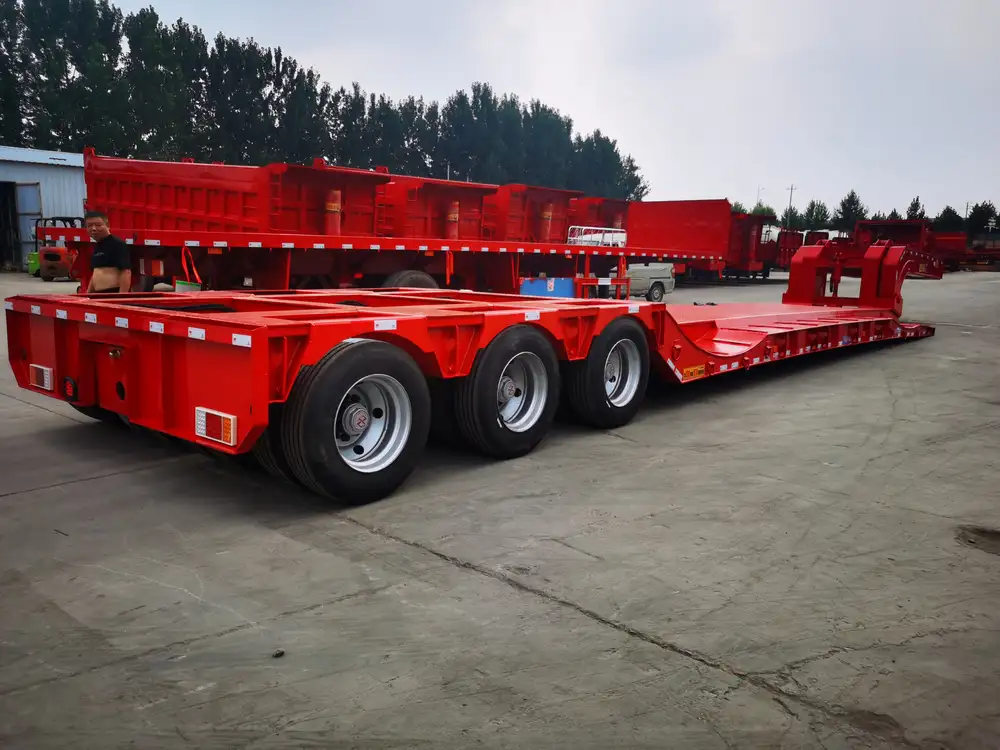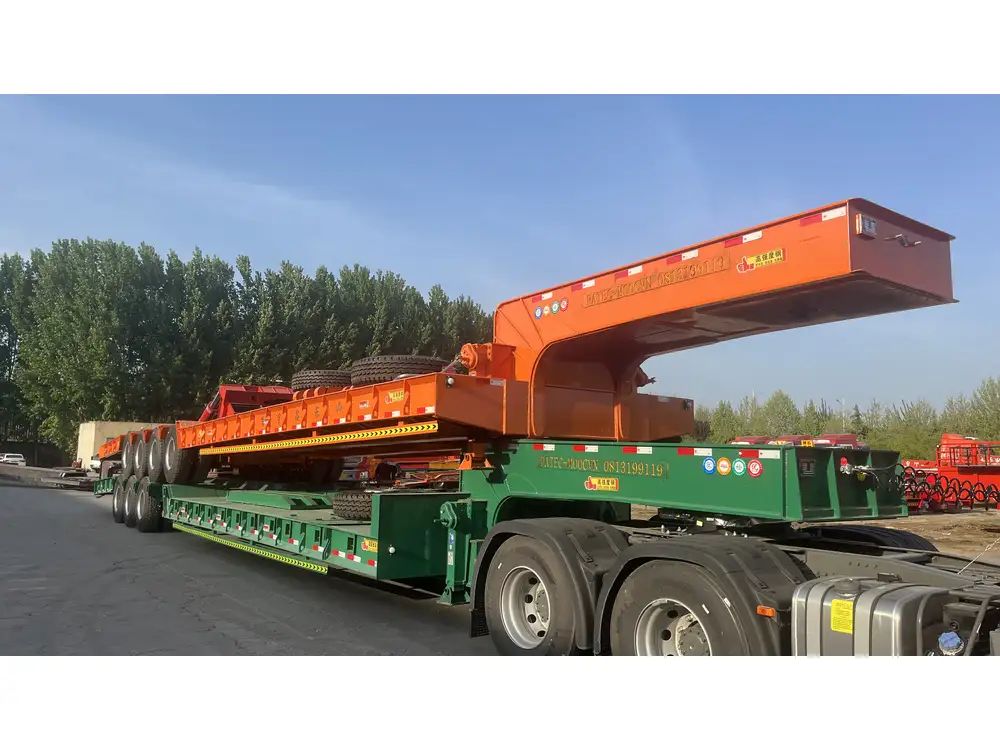Understanding Dump Trailer Types and Their Sizes
When considering the length of a dump trailer, it is imperative to first understand the variety of configurations that exist on the market today. Dump trailers are essential for hauling materials, from construction debris to landscaping supplies. They come in various sizes to cater to different needs, making it crucial to choose the right one for your specific applications.
Standard Sizes of Dump Trailers
Dump trailers are available in several lengths, commonly ranging from 10 to 20 feet. Below is a detailed breakdown of standard sizes:
| Trailer Length | Typical Applications | Payload Capacity |
|---|---|---|
| 10 Feet | Small renovations, landscaping jobs | Up to 6,000 lbs |
| 12 Feet | Residential cleanouts, yard work | Up to 8,000 lbs |
| 14 Feet | Medium-sized construction projects | Up to 10,000 lbs |
| 16 Feet | Large landscaping tasks, demolition materials | Up to 12,000 lbs |
| 18 Feet | Commercial uses, heavy-duty construction | Up to 14,000 lbs |
| 20 Feet | Industrial applications, bulk material hauling | Up to 16,000 lbs |

Factors Influencing Dump Trailer Length
Type of Material Being Hauled
The length of a dump trailer often depends on the type of material being transported. For example, when the task involves hauling heavy machinery or bulky materials, a longer trailer may be necessary to accommodate the load without exceeding safety regulations or weight limits.
Regulations and Licensing
Local transportation regulations play a significant role in determining the maximum allowable length for dump trailers in each area. It’s vital to familiarize yourself with local laws to avoid penalties. Here’s a snapshot of standard regulations:
| Region | Max Length for Dump Trailers | Additional Notes |
|---|---|---|
| United States | Generally 48 feet for semi-trailers | Varies by state; check local laws |
| Canada | 53 feet for some provinces | Weight limits apply |
| Europe | Mostly 12 meters (39.37 feet) | Varies by country |

Key Dimensions: Width and Height
While length is essential, width and height are equally critical in determining the functionality of your dump trailer.
- Width: Generally, dump trailers range from 6.5 to 8.5 feet in width. A wider trailer allows for more material to be loaded but can also make maneuvering in tight spaces challenging.
- Height: The sides of dump trailers commonly stand 2 to 4 feet tall, depending on the design and the material being hauled. Higher sides can accommodate deeper loads, which is advantageous for transporting loose materials like gravel and sand.
Assessing Payload Capacity and Weight Distribution
Calculating the Payload
Understanding how load weight affects the overall capacity of a dump trailer is crucial for safe transportation. The payload capacity can vary, but it is generally recommended to stay within:
- Light-duty trailers: 3,000 to 7,000 lbs
- Medium-duty trailers: 7,000 to 12,000 lbs
- Heavy-duty trailers: 12,000 to 16,000 lbs

Importance of Weight Distribution
Proper weight distribution is vital when loading materials in a dump trailer. Overloading one side can cause instability, leading to potential accidents or damage to the trailer itself. Here are some best practices:
- Distribute load evenly: Ensure that materials are spread out across the entire bed of the trailer.
- Keep the load low: Load heavier items closer to the trailer’s axles to maintain balance and improve handling.
- Secure the load: Use straps, ropes, or tarps to prevent movement during transit.
Common Uses for Dump Trailers
Dump trailers serve a plethora of purposes, which ultimately influences their design and length. Here are some common uses:
- Construction Projects: Hauling concrete, wood, and debris.
- Landscaping: Transporting soil, mulch, and shrubs.
- Agriculture: Moving feed, fertilizers, and other bulk agricultural materials.
- Recycling: Collecting scrap materials for recycling.
Choosing the Right Dump Trailer for Your Needs

Assessing Your Requirements
When selecting a dump trailer, consider the following factors:
- Material Type: What will you be hauling? Heavier items may require a more robust trailer.
- Frequency of Use: Do you need a trailer for daily use or occasional jobs?
- Storage Space: Ensure you have enough room to store the trailer when not in use.
Financing Your Dump Trailer
Investing in a dump trailer can be a substantial commitment. Here are some financial considerations:
- New vs. Used: New trailers often come with warranties, but used models can save you money.
- Financing Options: Many manufacturers offer financing to help spread the cost. Be sure to shop around for competitive rates.
Maintenance Tips for Longevity
A dump trailer is a significant investment, and proper maintenance can extend its life. Here are essential maintenance practices:
- Regular Inspections: Check for signs of wear and tear, including breaks in the frame and damage to the bed.
- Tire Care: Ensure tires are properly inflated and regularly rotated.
- Lubrication: Apply lubrication to moving parts to prevent rust and corrosion.

Frequently Asked Questions
How long will a dump trailer last?
The longevity of a dump trailer largely depends on usage and maintenance. With proper care, a high-quality dump trailer can last 10 to 15 years or more.
Can I modify the length of my dump trailer?
Modifying a trailer’s length is possible but usually not recommended because it can affect safety and stability. Consult a professional for any modifications.

What is the best size dump trailer for landscaping?
For landscaping purposes, a 6 to 12-foot dump trailer is typically ideal. It allows for easy maneuverability while providing ample space for materials.
Are dump trailers easy to operate?
Yes, most dump trailers are designed for straightforward hooking and unhitching. However, it’s important to familiarize yourself with the specific model you are using.
What safety gear should I use when operating a dump trailer?
Essential safety gear includes gloves, safety glasses, and sturdy footwear. Additionally, consider reflective vests if working near roadways.

Conclusion: Make an Informed Decision
Understanding the various dimensions, capacities, and applications of dump trailers allows users to make informed decisions. This knowledge is invaluable not only for efficiency and performance but also for compliance with safety regulations. Selecting the right dump trailer length based on your specific needs will ensure that you are well-equipped to handle any hauling task effectively.
In summary, evaluating factors such as the type of material, weight distribution, and intended use provides clarity in selecting the perfect dump trailer for your operations. With the right equipment, you can achieve optimized productivity, safety, and success in all your hauling efforts.



